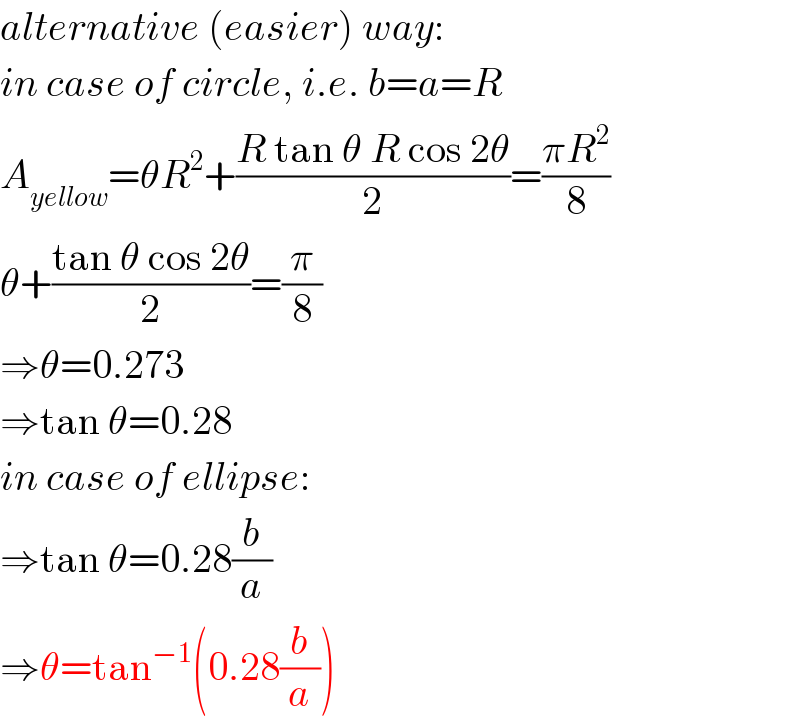
Question and Answers Forum
Question Number 51134 by ajfour last updated on 24/Dec/18

Commented by ajfour last updated on 24/Dec/18

Answered by mr W last updated on 24/Dec/18

Commented by mr W last updated on 24/Dec/18

Commented by ajfour last updated on 24/Dec/18

